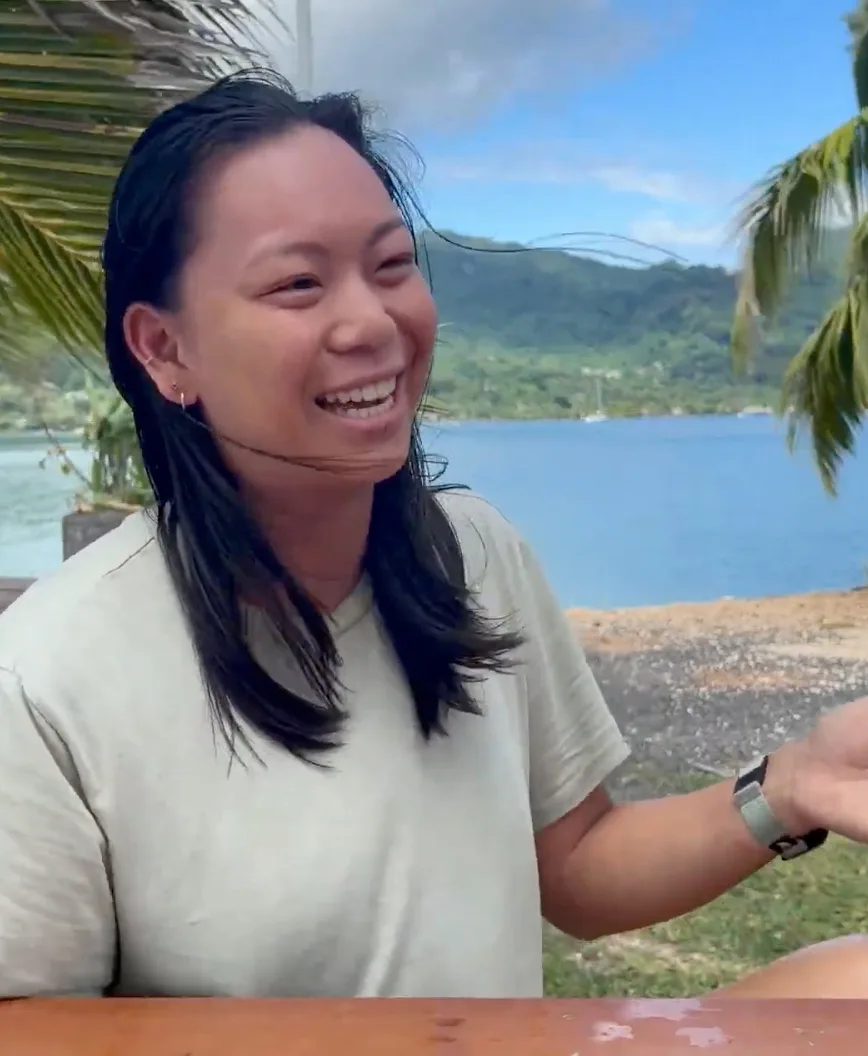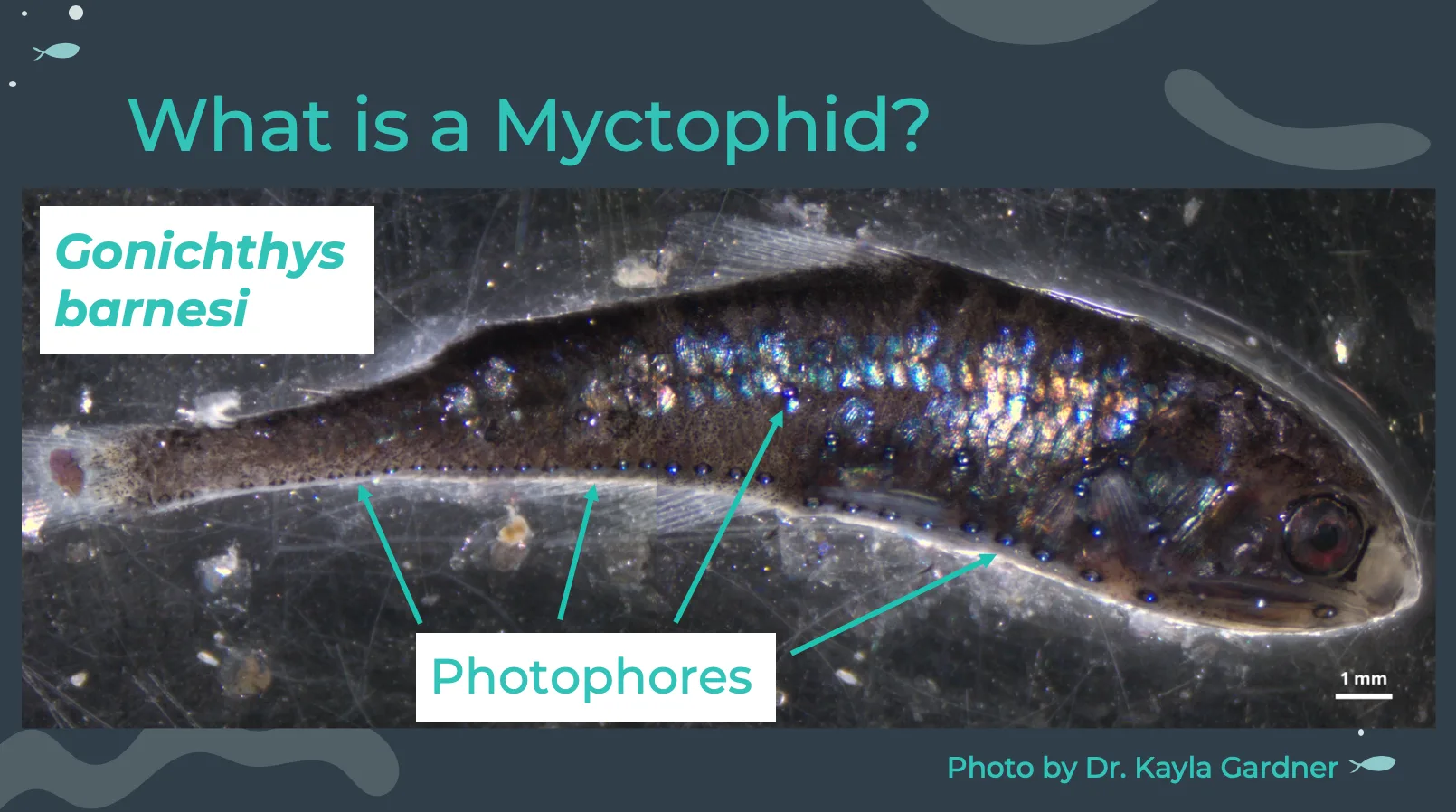Programs Blog
Jaimie On Low-Oxygen Fish and an Iconic Loss

Date: May 30, 2025
Time: 1500
Location: Gump Marine Station, Mo‘orea
Weather: 76˚ F, 5-10 kts easterly, rain showers
Below is an excerpt from an interview with Jaimie Lin, Washington U. in St. Louis
What is happening with your science project right now?
We just finished our manuscripts last night, and now we are working on our final presentations for the symposium. So final push to finish everything up. It’s been pretty exciting to get all of that squared away.
I’m in the myctophid (lanternfish) group. We studied the biodiversity of myctophid communities as well as some genomics and population structure during the cruise track. We were looking at the relationship between myctophids and oxygen minimum zones—their depths and dissolved oxygen concentrations at depth. We found that the fish actually seemed to, maybe, do better in hypoxic, low oxygen, environments. Which is kind of interesting. On the genomic side we found that there are pretty different population structures of myctophids in the South Pacific Gyre. The interpretation of that is potentially those populations specifically are not quite as resilient as the biodiversity suggests. But we still don’t know that much about myctophids, especially in the South Pacific, so it’s hard to draw broad conclusions.
How did you collect data on myctophids?
Myctophids—at least the ones we were collecting—are very small, a couple centimeters long. They live in the mesopelagic, which is like 200 to 1,000 meters below the surface. In the nighttime they will migrate up to the surface waters. Our data collection was two different types of net tows: meter nets (deeper water) and neuston nets (at the surface). This happened at night because during the day the fish are just too deep to collect. Every night we would do one tow or the other, and once we pulled them up, we would ID them under the microscope—mostly Kayla (postdoc) was doing the identification—then we would do DNA extraction and sequencing.
Have you done a project like this before?
I personally have not done a lot of DNA stuff. I’ve done a research project before, more ecology, studying the impact of certain mutant plant hairs on herbivores. So a lot of that data analysis was sort of similar—doing statistical analyses, using R (programming language for this), but the actual data collection was very different. A lot of learning new things, which was great.
Do you have a favorite sea story?
I guess most iconic was that I was directly involved with the loss of our JLO octopus. At the last phase of our cruise each of us is the Junior Lab Officer. Every time we turned over watches (shifts) in the lab, we pass on certain items to the next JLO. There was a necklace and then this octopus that someone had crocheted many, many years ago on a different cruise. This time, which we had never done before, the previous JLO was passing the lab on to me and they were wearing the octopus around their neck, which I had never seen before, and I was feeling skeptical about it, but then I decided, Yeah, I’ll wear it as a necklace. It’ll be great.
That night we had to strike the jib. I was up there on the bowsprit furling the sail, way up at the head of the sail. It’s a very involved process. (Clipped in by carabineers and a harness), you’re trying to stand on the bowsprit and on these lines and not fall off while the ship’s moving. You only have a little bit of the bowsprit to lean against to not fall off. There’s a lot of moving parts and it’s also just physically hard because you’re fighting a very heavy sail to get it into a certain shape. So that was going on! We did furl the sail: upside down in the moment. But it was furled and attached and it didn’t fall off into the ocean.
Twenty minutes later I was walking around the deck, doing our normal science stuff, and I realized that the octopus wasn’t there anymore. It must have happened when I was furling the sail, that the octopus got ripped off my neck. This was a pretty sad moment. The octopus was pretty iconic.
We turned over to the watch after us and we were like, “You guys are on a mission to retrieve the octopus.” During the dawn watch they did reset the jib, with a dipnet standing by, per captain’s orders, to fish it out of the water in case it was furled into the sail. Unfortunately the octopus was not retrieved. Not a happy story. But a silly one.


Recent Posts from the Ships
- Ocean Classroom 2024-A collaborative high school program with Proctor Academy
- Collaborations and Long-term Commitments: SEA’s Caribbean Reef Program Sets a Course for Coastal Programs that Compliment Shipboard Experiences.
- Sea Education Association students prepare for life underway using state of the art nautical simulation from Wartsila Corporation.
- SEA Writer 2022, Magazines From the Summer SEA Quest Students
- Technology@SEA: Upgrades Allow Insight into Ocean Depths
Programs
- Gap Year
- Ocean Exploration
- High School
- Science at SEA
- SEA Expedition
- SEAScape
- Pre-College
- Proctor Ocean Classroom
- Protecting the Phoenix Islands
- SPICE
- Stanford@SEA
- Undergraduate
- Climate and Society
- Climate Change and Coastal Resilience
- Coral Reef Conservation
- Marine Biodiversity and Conservation
- MBL
- Ocean Exploration: Plastics
- Ocean Policy: Marine Protected Areas
- Oceans and Climate
- Pacific Reef Expedition
- The Global Ocean: Hawai'i
- The Global Ocean: New Zealand